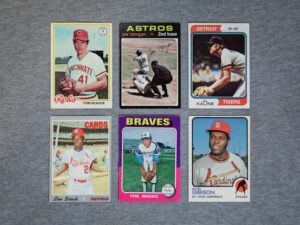The Boston Celtics are World Champions! Forgive me as a Boston sports fan; I still feel the afterglow of the NBA Finals. The Celtics proved the pundits and haters wrong and steamrolled the Dallas Mavericks, besting them four out of five games. Before the series began, almost everyone in national sports media jumped on the Dallas bandwagon, believing they had one the best backcourt duos in history with Kyrie Irving and Luka Dončić. Still, the Celtics’ model proved to be much better suited to winning the championship.
We can learn a lot about the strength of diversification when analyzing how the Boston Celtics were constructed by Brad Stevens for 2024. It’s not about having one or two of “the best” assets but five or six great assets.
Why Is Portfolio Diversification Important? – The I in Team
In basketball, relying too heavily on one or two star players (Kyrie or Luka) can lead to failure if the players are injured, have an off night, don’t buy into the team’s philosophies, aren’t well conditioned, or are defensive liabilities. Five men are on the floor at all times, and at least another seven are on the bench. A diverse team ensures that if one player is underperforming, others can step up, as is the case with investing.
Historically, if you drafted a Nvidia or Jordan, the best player or stock could win it all, but eventually, the run ends, and you are left looking for the next lotto ticket. A well-diversified portfolio/roster can sustain you for the long term. Putting all your money into one or two high-growth stocks is risky because if that company falters, your entire portfolio suffers.
Why Is Portfolio Diversification Important – Read the Current Environment
If there’s a lesson the Celtics sent across the league this year with their 16-3 postseason, it’s this: it’s not enough to accept a historically successful strategy if you want to go the extra mile and win it all. Champions are not made by playing it safe; champions are made when some risk is involved.
Historically, you could assemble a team with one giant center (Shaq) equivalent to a huge MEGA-cap stock like Amazon and partner them with an upcoming guard/sharpshooter (Kobe Bryant), a hot small-cap stock that, if it pans out, will add a ton of upside to your portfolio/team; all that was left to do was fill out the roster with minimum-salary players (bonds) and expect success. Those days are gone; you need greats all around to succeed, and you can’t look in the expected places.
Risks are a component of success. Do you want a 500-level team that gets bounced in the first round each year or a team that may seem risky on paper but has what it takes to get it done?

The Strategy Behind Mazulla Ball/Short-Term Voliltitly
Modern NBA teams live and die by the three-point shot, and it’s a simple math equation. The Celtics’ successful “Mazulla ball” is a prime example; on any given night, a team can lose because their three-pointers didn’t fall. However, maintaining a decent three-point shooting percentage throughout a season ensures the math works in their favor. The Celtics have experienced losses due to cold shooting nights, akin to having a bad year in the stock market.
According to investment researcher Morningstar, large stocks have returned an average of 10% per year since 1926, while long-term government bonds have returned between 5% and 6%; this highlights the power of staying invested in equities over the long term. Despite short-term volatility, stocks’ long-term growth potential is significantly higher than that of bonds.
It begs the question, how much of your potential future return will you trade for a smoother ride? Just as the Celtics’ commitment to the three-point shot paid off over a season, embracing market volatility can lead to greater returns over time. Volatility is your ally in achieving long-term financial success, and the Celtics’ strategic approach to leveraging analytics and modern gameplay proved this point.
Here’s how I see the Celtics players as types of diversified portfolio assets:
Tatum (S&P 500): Tatum is the cornerstone of the Celtics, much like the S&P 500 in a diversified portfolio. Drafted at a steal, he has shown emotional growth and dedication to the team, consistently performing as an All-Star. With Tatum as the reliable foundation, the Celtics can afford to take risks elsewhere.
Brown (Growth Stock): The league’s most valuable player, Brown has shown that he is not only more than what the naysayers predicted he could be but also proven to be the team’s emotional leader, right next to Tatum. Brown embodies the essence of a growth stock. Initially raw when drafted, he has improved every season, exceeding expectations. His trajectory suggests continued growth, making him an invaluable asset.
Porizingus (Tech Stock): The “Unicorn,” as they call him, is a 7ft 2” center/power forward who can defend at the rim and shoot 3-pointers with accuracy. He’s nothing short of a game-changer when he’s healthy. Also, he was misused and not given his due credit by other teams. Porzingus is a high-risk, high-reward asset; he has the potential to elevate the team to new heights when healthy but requires diversification due to his injury history.
Holiday (Defensive Asset): Holiday is the Celtics’ defensive stalwart, much like a defensive asset in a portfolio. With his deep basketball acumen and ability to perform in clutch moments without seeking the spotlight, he provides stability and reliability.
White (Value Stock): Defensive all-star, humble, and not flashy; White is the Celtics’ hidden gem, akin to a value stock. He has become an invaluable asset acquired from a team that undervalued him, paying dividends with his humble yet impactful play. His defensive prowess and unflashy consistency have made him a crucial part of the team.
Horford (A Blue-Chip Stock): Al is still paying reliable dividends. Though in the latter stages of his career, he continues to support and promote the team culture unwaveringly. Like a reliable Dow stock, Horford may not always be in the spotlight, but his contributions are essential for the team’s success, especially as a dependable backup to Porzingis.
Why Is Portfolio Diversification Important – A Lesson From 1980s Roster Construction
I say this often, but our culture often succumbs to recency bias. Whether it was the Minnesota Timberwolves or The Dallas Mavericks, many people and media outlets undervalued how well-composed the Celtics were to be the World Champs.
In the 1980s, roster construction mirrored the old 60/40 investment portfolio. Back then, every team had a 300-pound, 7-foot center to clog up the middle of the court/lane, much like a portfolio heavily weighted in bonds. However, in the 2010s, the Golden State Warriors changed the game with their pace-and-space philosophy, rendering these traditional big men less effective. The Celtics embraced this evolution in team construction and took it to a new level, emphasizing versatility, speed, and strategic depth to gain a competitive edge.
During the reign of the Warriors in the 2010s, bond interest rates were very low, and maintaining 40% in bonds was questioned for those with a long-term investment horizon. Why invest so heavily in bonds when equities have a much higher potential for growth over a decade or more?
Today, a 2040 target date fund still allocates about 25% to bonds. Over the next 15 years, historical trends suggest that an equity-heavy portfolio is more likely to outperform a target date fund. Volatility can be an ally for those with a long-term perspective.
Brad and Wyc assembled a coaching staff and roster of high-growth equities instead of opting for what had traditionally worked in the 80s and 90s. Fortune favors the bold.
If you’d like to discuss the Celtics roster or how to diversify your portfolio best, please reach out. As a family financial planner, I love chatting sports and hearing about different people’s financial goals.
There is no guarantee that a diversified portfolio will enhance overall returns or outperform a non-diversified portfolio. Diversification does not protect against market risk. (26-LPL)
Bonds are subject to market and interest rate risk if sold prior to maturity. Bond values will decline as interest rates rise. Bonds are subject to availability, change in price, call features and credit risk. (116-LPL)
Please ensure your disclaimer is acceptable or use this one, e.g.Government bonds are guaranteed by the US government as to the timely payment of principal and interest and, if held to maturity, offer a fixed rate of return and fixed principal value.
The S&P 500 is a stock market index tracking the stock performance of 500 of the largest companies listed on stock exchanges in the United States. Indexes are unmanaged and cannot be invested in directly. (102-LPL)
Value investments can perform differently from the market as a whole. They can remain undervalued by the market for long periods of time. (135-LPL)
Dividend payments are not guaranteed and may be reduced or eliminated at any time by the company. (147-LPL)
The principal value of a target fund is not guaranteed at any time, including at the target date. The target date is the approximate date when investors plan to start withdrawing their money. (127-LPL)
Securities and advisory services offered through LPL Financial, a registered investment advisor. Member FINRA/SIPC.
This material is for general information only and is not intended to provide specific advice or recommendations for any individual. There is no assurance that the views or strategies discussed are suitable for all investors or will yield positive outcomes. Investing involves risks including possible loss of principal. Any economic forecasts set forth may not develop as predicted and are subject to change.





